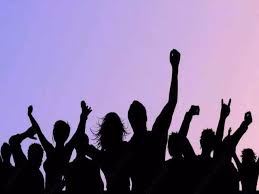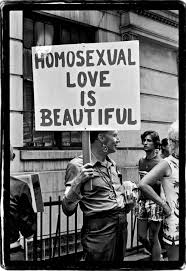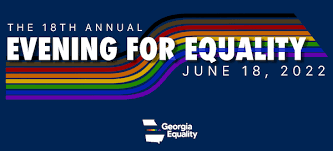Title: Celebrating Diversity and Equality: The LGBTQ Community
Introduction:
The LGBTQ community, composed of lesbian, gay, bisexual, transgender, and queer individuals, has become a powerful force in the ongoing fight for equality and acceptance. Over the years, this vibrant community has made significant strides towards dismantling barriers and challenging societal norms. Today, we celebrate their resilience and contributions as they continue to shape a more inclusive world.
A Diverse Spectrum of Identities:
The LGBTQ community encompasses a wide range of identities and experiences. Lesbians are women attracted to other women, while gay men are attracted to other men. Bisexual individuals are attracted to both genders, while transgender individuals may identify with a gender different from their assigned sex at birth. Additionally, queer is an umbrella term that encompasses various sexual orientations and gender identities outside of heterosexual and cisgender norms.
Fighting for Equality:
Throughout history, the LGBTQ community has faced discrimination, prejudice, and marginalization. However, their struggle for equal rights has led to significant advancements in many parts of the world. Activists have fought tirelessly for legal protections against discrimination in employment, housing, healthcare, and education. Landmark victories such as marriage equality have brought joy to countless couples who can now legally marry their same-sex partners.
Promoting Visibility:
Visibility plays a crucial role in breaking down stereotypes and fostering understanding within society. Pride parades and events serve as platforms for the LGBTQ community to proudly showcase their identities while promoting acceptance. These celebrations not only provide spaces where people can express themselves freely but also encourage dialogue between members of the community and allies.
Challenges Still Ahead:
Despite progress made over the years, challenges persist for the LGBTQ community worldwide. Discrimination continues to exist in various forms – from hate crimes to workplace inequality – reminding us that our work is far from done. Transgender rights face particular scrutiny with issues such as access to healthcare and legal recognition still requiring attention.
Support and Allyship:
Support from allies is crucial in the ongoing fight for LGBTQ rights. Allies are individuals who stand alongside the community, actively working to challenge prejudice and discrimination. By educating themselves, using inclusive language, and advocating for LGBTQ rights, allies contribute to creating a more accepting and inclusive society.
Creating Safe Spaces:
Safe spaces are essential for LGBTQ individuals to express themselves without fear of judgment or discrimination. These spaces can be physical locations such as LGBTQ centers or virtual communities where individuals can find support, resources, and connections. Creating safe spaces fosters a sense of belonging and helps combat isolation often experienced by members of the community.
Conclusion:
The LGBTQ community has come a long way in its quest for equality and acceptance. Through resilience, activism, and allyship, significant progress has been made. However, there is still work to be done to ensure full equality for all members of the community worldwide. Let us continue to celebrate diversity, challenge biases, and support one another on this journey towards a more inclusive future.
Understanding the LGBTQ Community: Answers to 5 Common Questions
- What does LGBTQ stand for?
- What is the difference between sexual orientation and gender identity?
- How can I be supportive of the LGBTQ community?
- Are there any legal protections for LGBTQ individuals?
- What are some common challenges faced by the LGBTQ community?
What does LGBTQ stand for?
LGBTQ is an acronym that stands for Lesbian, Gay, Bisexual, Transgender, and Queer (or Questioning). It is an inclusive term used to represent a diverse community of individuals with different sexual orientations and gender identities. The acronym continues to evolve to include additional identities as our understanding of gender and sexuality expands.
What is the difference between sexual orientation and gender identity?
Sexual orientation and gender identity are two distinct aspects of a person’s identity, although they are often interconnected and can influence one another. Here’s a breakdown of the difference between the two:
1. Sexual Orientation:
Sexual orientation refers to a person’s enduring pattern of emotional, romantic, and/or sexual attractions to individuals of the same gender, different gender(s), or multiple genders. It is about who someone is attracted to emotionally, romantically, and sexually.
Common sexual orientations include:
– Heterosexuality: Attraction to individuals of the opposite gender.
– Homosexuality: Attraction to individuals of the same gender.
– Bisexuality: Attraction to both genders.
– Pansexuality: Attraction regardless of gender; it includes attraction to all genders.
It is important to note that sexual orientation exists on a spectrum, and individuals may identify with various labels or prefer not to label themselves at all.
2. Gender Identity:
Gender identity refers to an individual’s deeply held sense of their own gender. It is how someone experiences and understands themselves in relation to concepts of masculinity, femininity, or other gender identities beyond the binary.
Common gender identities include:
– Cisgender: When an individual’s gender identity aligns with the sex they were assigned at birth (e.g., someone assigned female at birth identifies as a woman).
– Transgender: When an individual’s gender identity differs from the sex they were assigned at birth (e.g., someone assigned male at birth identifies as a woman).
Gender identity can also encompass non-binary identities where individuals do not exclusively identify as male or female but may identify as both, neither, or another gender entirely.
It is essential to respect and affirm people’s self-identified genders and use their preferred pronouns when referring to them.
In summary, sexual orientation relates to who an individual is attracted to emotionally, romantically, and sexually, while gender identity concerns an individual’s deeply held sense of their own gender, which may or may not align with the sex they were assigned at birth. Both aspects are integral to a person’s identity and should be respected and acknowledged.
How can I be supportive of the LGBTQ community?
Supporting the LGBTQ community is an important step towards creating a more inclusive and accepting society. Here are some ways you can show your support:
- Educate Yourself: Take the initiative to learn about different sexual orientations, gender identities, and the challenges faced by the LGBTQ community. Read books, articles, and watch documentaries to gain a deeper understanding of their experiences.
- Use Inclusive Language: Be mindful of the language you use and avoid making assumptions about someone’s gender or sexual orientation. Respect people’s chosen pronouns and use inclusive terms that encompass all identities.
- Be an Ally: Show your support openly by being an ally to the LGBTQ community. This means standing up against discrimination, prejudice, and harmful stereotypes whenever you encounter them. Use your voice to advocate for equal rights and challenge discriminatory practices.
- Attend LGBTQ Events: Participate in Pride parades, film festivals, or other LGBTQ events in your community. These events provide opportunities to show solidarity, celebrate diversity, and learn from members of the community.
- Support LGBTQ Businesses and Organizations: Choose to support LGBTQ-owned businesses whenever possible. Additionally, donate or volunteer for local LGBTQ organizations that work towards advocacy, education, healthcare access, or mental health support for the community.
- Foster Inclusive Environments: Create safe spaces within your own social circles where LGBTQ individuals feel welcome and accepted without fear of judgment or discrimination. Encourage open dialogue about LGBTQ issues and challenge any homophobic or transphobic attitudes that may arise.
- Stand Up Against Bullying: Bullying disproportionately affects LGBTQ youth both online and offline. Speak out against bullying behavior when you witness it happening around you and support anti-bullying initiatives in schools and communities.
- Support Legislative Efforts: Stay informed about legislation affecting LGBTQ rights in your country or region. Support politicians who champion equality by voting for them or engaging in advocacy campaigns that promote inclusive policies.
- Be a Supportive Friend or Family Member: If someone you know comes out as LGBTQ, be supportive and affirming. Offer a listening ear, respect their journey, and educate yourself on how to be an ally. Remember that acceptance and support from loved ones can have a profound impact on an individual’s well-being.
- Amplify LGBTQ Voices: Share stories, art, and achievements of LGBTQ individuals through social media or other platforms. Amplify their voices by promoting their work and advocating for their rights.
Remember, being supportive of the LGBTQ community is an ongoing commitment. It requires continuous learning, self-reflection, and action to create a world where everyone can live authentically and without discrimination based on their sexual orientation or gender identity.
Are there any legal protections for LGBTQ individuals?
Legal protections for LGBTQ individuals vary across countries and jurisdictions. In some countries, comprehensive legal protections have been put in place to safeguard the rights of LGBTQ individuals, while in others, there may be limited or no legal protections at all. It’s important to note that the following information provides a general overview and may not reflect the specific situation in every jurisdiction:
- Anti-Discrimination Laws: Many countries have enacted laws prohibiting discrimination based on sexual orientation and gender identity in various domains, such as employment, housing, education, and public accommodations.
- Marriage Equality: Several countries have legalized same-sex marriage, granting LGBTQ couples the same legal rights and benefits as opposite-sex couples.
- Adoption Rights: Many jurisdictions allow LGBTQ individuals and couples to adopt children. However, adoption laws can vary widely depending on the country or state.
- Hate Crime Laws: Some jurisdictions have specific legislation that enhances penalties for crimes committed against individuals based on their sexual orientation or gender identity.
- Gender Identity Recognition: In certain countries, legal processes exist to change one’s gender marker on identification documents to align with their gender identity.
- Employment Protections: Some jurisdictions have laws prohibiting workplace discrimination based on sexual orientation and gender identity. These laws may include provisions related to hiring practices, promotion opportunities, and workplace harassment.
- Conversion Therapy Bans: A growing number of places have banned conversion therapy, a harmful practice aimed at changing an individual’s sexual orientation or gender identity.
It is essential to consult local laws and regulations specific to your jurisdiction for accurate information regarding legal protections for LGBTQ individuals in your area. Additionally, it is worth noting that while legal protections are crucial steps towards equality, societal attitudes and cultural acceptance also play a significant role in ensuring equal treatment for LGBTQ individuals.
What are some common challenges faced by the LGBTQ community?
The LGBTQ community faces a range of challenges that can vary depending on cultural, social, and legal contexts. Here are some common challenges experienced by members of the LGBTQ community:
- Discrimination and Prejudice: LGBTQ individuals often face discrimination and prejudice in various aspects of life, including employment, housing, healthcare, and education. This can lead to limited opportunities, unequal treatment, and exclusion from certain spaces.
- Legal Inequality: Laws that discriminate against LGBTQ individuals still exist in many parts of the world. Lack of legal protections can leave them vulnerable to discrimination, harassment, and violence. Issues such as marriage equality, adoption rights, and access to healthcare continue to be debated in many jurisdictions.
- Bullying and Harassment: LGBTQ youth are at a higher risk of bullying and harassment in schools or other social settings. This can have detrimental effects on their mental health and overall well-being.
- Mental Health Challenges: The LGBTQ community faces higher rates of mental health issues such as depression, anxiety, substance abuse, and suicide due to the stressors associated with societal stigma, discrimination, rejection from family or friends, and internalized homophobia or transphobia.
- Lack of Acceptance within Families: Coming out to family members can sometimes result in rejection or strained relationships for LGBTQ individuals. The lack of acceptance within families can lead to feelings of isolation and emotional distress.
- Healthcare Disparities: Accessing inclusive healthcare services that address the unique needs of the LGBTQ community can be challenging. Some individuals may face discrimination from healthcare providers or encounter difficulties finding providers who are knowledgeable about their specific health concerns.
- Violence and Hate Crimes: Hate crimes targeting LGBTQ individuals remain a significant concern in many societies around the world. Transgender individuals are particularly vulnerable to violence due to transphobia.
- Homelessness: A disproportionate number of homeless youth identify as LGBTQ due to family rejection or conflict related to their sexual orientation or gender identity. These individuals often face increased risks of exploitation, mental health issues, and limited access to support services.
- Intersectional Challenges: LGBTQ individuals who also belong to marginalized communities based on race, ethnicity, religion, or disability may face compounded challenges due to overlapping forms of discrimination and prejudice.
Addressing these challenges requires ongoing advocacy for legal protections, education to combat stereotypes and biases, promoting inclusive policies and practices, and fostering supportive communities. It is essential to work towards creating a more accepting and inclusive society where all individuals can live authentically and without fear of discrimination or exclusion.





Leave a Reply